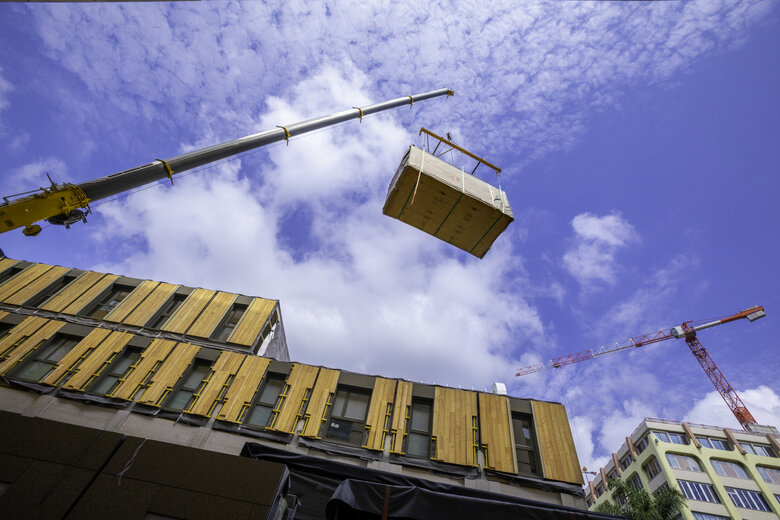
Infrastructure Victoria’s latest advice to the state government shows coordinated action to reduce emissions of infrastructure can save costs, get more value from existing infrastructure and create new jobs, writes Jim Miller.

With $201 billion committed for current and new projects, Victoria has an ambitious infrastructure program.
The state also has the most progressive emissions reduction targets in Australia, designed to drive down emissions across all sectors on the path to net zero by 2045.
New infrastructure projects are responsible for emissions when they consume large amounts of energy and construction materials. So, how can the governments deliver the infrastructure we need while also reducing emissions?
Infrastructure Victoria’s latest advice to the Victorian Government shows coordinated action to reduce emissions of infrastructure can save costs, get more value from existing infrastructure and create new jobs.
From planning to design, construction and maintenance, there are many opportunities to reduce emissions across all stages of infrastructure’s life.
Getting more out of existing infrastructure
Government policies and practices can promote getting better use from existing infrastructure. Modular and off-site construction methods can be used to reduce emissions by up to 45 per cent. Building and construction standards can be adapted to support innovation and drive demand.
With clearer guidance and consistent practices, the government has a big opportunity to influence how infrastructure is designed, what materials are used and how it is made.
Jim Miller
Examples from Australia and overseas show it can be done. In London, a train station upgrade designed to limit carbon saved 27 per cent in projected costs and reduced emissions by 25 per cent. In the Netherlands, government tenders favour projects with high commitments to emissions reduction. Digital engineering models reduced concrete use by hundreds of cubic metres for a Sydney train station redevelopment, lowering both emissions and project costs.
And in Victoria, upgrades to the traffic light network have improved travel times, deferring the need for some new roads.
With clearer guidance and consistent practices, the government has a big opportunity to influence how infrastructure is designed, what materials are used and how it is made.
Lower carbon materials
Many lower carbon materials already exist. Some are being developed in Australia. There are bricks fired with remnant sawdust instead of gas, and concrete supplemented with industrial by-products such as waste fly ash.
New technology, such as digital platforms that visualise carbon hot spots, are also playing an important role.
A strong commitment from government to reduce greenhouse gas emissions across its infrastructure portfolio sends a clear message to industry that low carbon materials and processes will be favoured.
Doing this will give industry confidence to develop new solutions, which can be exported globally as the world transforms to a low carbon economy.
We have heard from industry, including makers of steel and cement, that they are ready to respond to clear and consistent guidance from government. Reducing emissions of infrastructure is the new business-as-usual.
*Jim Miller is the Chair of Infrastructure Victoria
Comment below to have your say on this story.
If you have a news story or tip-off, get in touch at editorial@governmentnews.com.au.
Sign up to the Government News newsletter